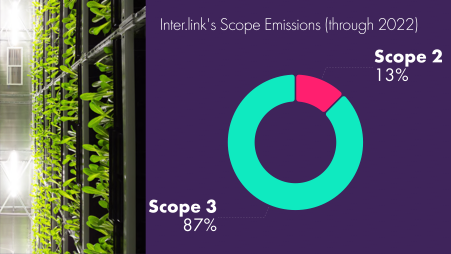Carbon Neutral IP Transit for a Reliable Data Center: partimus story
ABOUT partimus partimus is a new data center provider in Limburg, Germany with high security...
One of the most daunting things when you start to dive into the topic of sustainability is all the different definitions and what they actually mean. We want to try to make things a little bit clearer, so that you can get a better understanding of the steps that we are taking towards sustainability. We’ll also give some context into how these terms are used in the network industry. So, get ready to impress your friends and co-workers with your newfound knowledge.
One of the biggest drivers or ways that businesses can make an impact is by reducing their carbon footprint. The simple definition of a carbon footprint is the amount of gaseous emissions that are associated with a specific activity. For example, the emissions associated with the glass of milk that you drink in the morning can be measured from the farm to your table. And the same concept applies to the network industry. We can attempt to measure the emissions that 10G IP-Transit from Frankfurt to London produces. Needless to say, that the process is rather intensive, but don’t worry we’ll be pulling back the curtain in an upcoming article.
The concept of carbon emissions is rather large and a bit abstract, so it is usually broken down into different categories. The most widely used accounting and reporting framework is the Greenhouse Gas Protocol, and where you find a wide range of resources and additional information. To simplify the main difference between the scopes is the difficulty in monitoring. One the best visual summaries of scope emissions is from Plan A which has a wide range of resources for companies at any step of their sustainability journey.
Scope 1 emissions are the most straight-forward, these are direct emissions from company-owned and controlled resources. For example, company facilities, such as offices or data centers would fall under this category. Additionally, all vehicles owned or used by employees that burn fuel also go into this scope. Since these emissions are directly caused by the company, it is a bit easier for the company to measure and take actions to help mitigate this type of emissions.
Scope 2 emissions are where things to start to become a bit harder for companies to measure and control. These are classified as indirect emissions which are still owned by the company. The biggest and most important especially in the network industry is all acquired electricity, steam, heat, and cooling. The company itself doesn’t produce the electricity but it requires the electricity to operate its data center for example. However, companies do have some control over scope 2 emissions.
For example, at Inter.link when possible, we select data centers based on how their electricity is produced. This means that a facility using renewable energy is preferred over a facility using conventional sources of power.
Scope 3 emissions tend to be where sustainability managers start to pull out their hair and for good reason. They are classified as indirect emissions (which are not included in scope 2) and cover basically everything else. The reason that they can be so difficult is that they are difficult to measure and are mainly outside of the company’s control. Another reason why scope 3 emissions get so much attention is that for many companies they tend to make up the vast majority of their overall emissions.

For example, at Inter.link through the end of 2022, Scope 3 emissions made up approximately 87% of our overall emissions. And when take a look at our emissions for the beginning of 2023, the percentage of Scope 3 emissions is even higher. For us some of the things that went into scope 3 emissions are business travel, capital goods, purchased goods and services, and upstream leased assets. Achieving reductions in these emissions can be the hardest to achieve and require close cooperation with suppliers to make a dent in the numbers.
One thing that you may have noticed about Inter.link’s scope emissions at the end of 2022, there were no scope 1 emissions listed. Some of the reasons for this are unique to Inter.link, such as the fact that we are a fully remote company, don't own any company vehicles, and that we don't produce anything physical. This allows us to have zero Scope 1 emissions and even better means that we don't have to undertake any mitigation efforts in this area.
However, as you can see we do still have Scope 2 and Scope 3 carbon emissions as a company. We'll show you how we are trying to reduce these emissions and what steps we are taking to offset these emissions as a company.
Want to know how we're doing at the beginning of 2024? Read this overview blog on our sustainability initiatives.
This article is designed to scratch the surface and give you a better understanding of what goes into understanding carbon footprints and how companies define emissions. The network industry faces some unique challenges around the topic of emissions since so much of our business is driven by electricity-use and the materials that go into making the Internet come alive. We’ll be sharing more information about our sustainability journey and how we’re approaching the subject, so stay tuned.
ABOUT partimus partimus is a new data center provider in Limburg, Germany with high security...
“When we founded Inter.link, we decided that environmental sustainability was going to be a...
ABOUT Kraud.Cloud kraud.cloud offers a Platform-as-a-Service for Kubernetes and Docker Cloud...
Comments